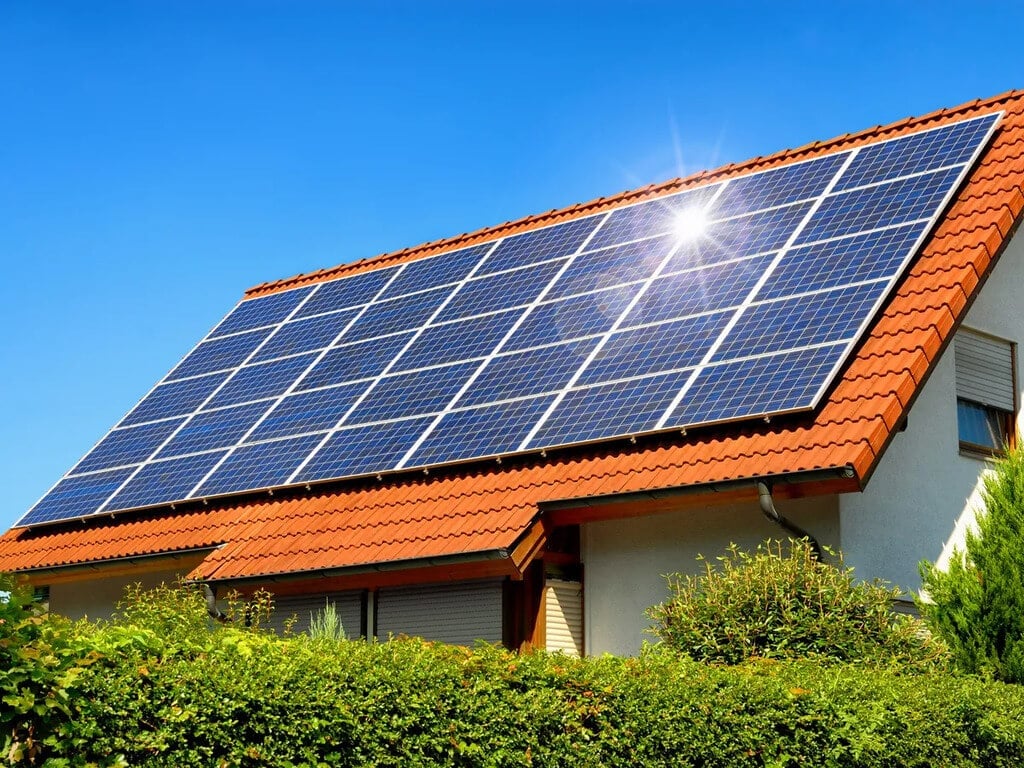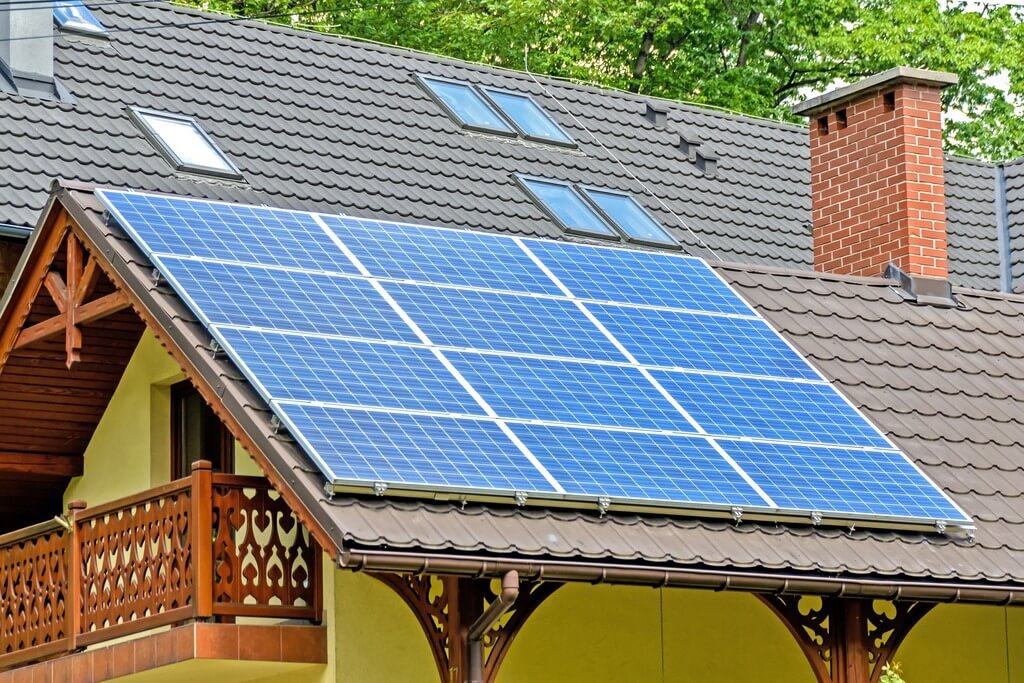Alternative energy is gradually taking over homes because of its benefits. Solar energy is the most generous of all renewable energies because of the abundance of sunlight that hits our planet. It is also among the easiest to utilize through home solar systems that convert solar energy into usable electric power. This article will discuss the basics of a home solar system, its varieties, and how they work.
What Is a Home Solar System?

Solar home systems (SHS) designed and installed by reliable companies like Smart Solar Energy Co. are solutions you can use in your home. Suppose you live away from the modern facilities of cities and towns or want to live a sustainable lifestyle. Solar energy can help you power your residence differently to suit your needs.
With an SHS, you can harness solar energy to power specific devices in your home using sunlight. SHS are also alternative options for low-income areas that help power their homes affordably.
SHS utilizes solar panels that are placed on rooftops and positioned to receive the most sunlight. The system converts solar energy into the home’s electricity to power lights and other electrical appliances.
An SHS can have up to eight devices up and running for up to five hours daily. You can use the rice cooker, LED lamp, and phone charger simultaneously, but it will depend on the solar panel capacity. Solar panels are designed to draw as much energy as possible, even during cloudy skies.
Different Types of SHS and How They Work

In general, three types of SHS come with various advantages and storage options.
Grid-Tied Solar Power Systems
Also known as an on-grid solar system, they are the most common solar power solution. The SHS is connected to the conventional electrical grid and your home. It also does not utilize a storage battery. The storage battery is connected to the SHS and saves solar energy for usage later. It can be used later in the evening or during emergency power interruptions.
On-grid solar systems allow the use of on-grid electricity when the solar panels are not converting solar energy into electricity. The system is also less expensive without battery storage.
Homes using the grid-tied solar power system are also offered different ways to sell excess energy back to the grid. These are net energy metering (NEM), net purchase and sale, and solar renewable energy certificates (SRECs).
NEM
Appliances can instantly use energy converted by solar panels, and the utility company that provided the home system can receive the excess generated power through net metering. Residential homes and commercial businesses using this system can sell the electricity they are not using for credit. This allows utility customers to generate electricity cleanly and efficiently while reducing their electric bills.
Net metering is also state-regulated in some areas. Companies may either offer net metering freely or due to state laws. The way solar compensation works through net metering varies on state legislation, policies, and regulations. There are currently 41 states that use NEM, in addition to American Samoa, U.S. Virgin Islands, and Puerto Rico.
NEM works only when you have an on-grid solar system or wind turbines. When excess power is fed back to the grid, it offsets the customer’s electric bill. For example, if your solar system produces 1,000 kWh of electricity in a month, but you only consume 800 kWh, the excess 200 kWh will be sent back to the grid, and you will receive a credit for it. You will also receive credit if you generally use less than what you currently generate.
Net Billing
Also referred to as net purchase and sale, the primary difference it has from NEM is that net-metering households get compensation at a retail rate. With net billing, customers are compensated at a wholesale rate.
Here, the customers sell the excess energy the solar system generates for less. They receive the dollar value depending on the electricity supply rate instead of credit in net metering. For example, if the retail rate is around USD$0.12, the wholesale rate can be around USD$ 0.06. That means you can ‘buy back’ the generated electricity that goes into the grid by adding USD$ 0.06 per kWh.
SRECs
Utility providers or power plants are legally required to source a fraction of their power from renewable energy to minimize fossil fuel emissions. One way to meet these requirements is to purchase renewable energy credits. These certificates are incentives for their renewable energy contribution to the state’s grid. It is a collective effort that allows the state to rely less on non-sustainable energy sources.
Customers who live in the mentioned states may get one SREC for every 1,000 kWh or one-megawatt hour of produced energy from their solar system. SRECs are separate from the generated electricity from your solar system. You can sell them to SREC brokers or the electric company. There are currently seven states where the SRECs program is available: Ohio, New Jersey, Maryland, Washington D.C., Pennsylvania, Delaware, and Massachusetts. SREC values also vary per state.
Off-Grid Solar Power Systems
Living away from modern society doesn’t mean abandoning certain conveniences such as electricity. That said, an off-grid lifestyle means you are moving away from the on-grid facilities and totally depending on sustainable ways of living, such as using an off-grid solar system.
As the name indicates, off-grid solar power systems are independent of main electric grids. The system only uses solar panels; the converted energy is stored inside a battery or directly goes to powering appliances.
The energy is transformed through the built-in inverter to power the home. The battery allows homes to run on solar energy exclusively day or night. Also known as stand-alone power systems, off-grid solar systems benefit remote or rural areas, as power plants or traditional grids are too far away or impractical.
Besides solar panels, batteries, and the inverter, the off-grid solar system also consists of a charge controller that regulates voltage and current to prevent overcharging and damage. You can also make your system take on a backup energy source during winter when solar energy production is deficient. Sometimes, off-grid users use the system with a generator to help power the home.
There are two different kinds of off-grid solar systems:
- AC-coupled systems use regular solar inverters, backup generators, gen-sets, or wind turbines.
- DC-coupled systems use micro-hydro systems or maximum power point tracker (MPPT) solar charge controllers. An MPPT solar charge controller is a DC-DC converter that increases the efficiency of the solar power system. It optimizes the voltage between the solar panel and the batteries. Micro-hydro systems are usually placed on rivers and generate less than 100 kW. They don’t affect the environment too much since they have nothing to do with dams or reservoirs.
Off-grid solar systems are beneficial, as you are independent of a utility company’s terms and policies, and they free you from paying for electric bills. The system also gives your home power when those dependent on electric companies suffer from blackouts. It benefits households with sick family members who require refrigerated medicines or electronic devices for health monitoring.
Hybrid Solar Power Systems
Hybrid solar power systems utilize photovoltaic (PV) panels like the grid-tied solar system. But they also come with battery storage that allows you to switch from using solar energy, relying on stored power from the battery, and grid power when needed. Despite being the more expensive option, they have become popular.
This solar system gives homeowners alternatives to reduce their energy bills and have backup power during an outage. It consists of a PV array, battery bank, charge controller, and backup power source similar to off-grid systems like gas generators or wind turbines.
It works by storing renewable energy that hits the PV panels. When a storm causes a power interruption, the system automatically powers appliances and lighting in your home. It keeps the refrigerator running and your mobile devices charged.
The hybrid solar system is beneficial when your utility company doesn’t offer a net-metering policy or if they have demand charges and time-of-use rates. This system might be for you if you need your home to run on backup solar power.
These three solar power systems can help you become wholly or partially independent from conventional grids. As the state of the world now calls homeowners to switch to renewable energy sources, many are looking into these systems to not only transition into a sustainable lifestyle but also to help them save on expenses from using grid electricity.
Takeaway
An SHS uses solar panels to draw solar energy and convert it into electricity. There are three solar power systems that you can use for your home, depending on your needs. You can choose on-grid solar systems connected to the grid without a battery for energy storage. Off-grid systems allow you to be completely independent of traditional grids. And hybrid systems can power homes during electric outages. All of them enable homes to use solar energy, as it is safer and more environmentally sustainable.
Read more:–

